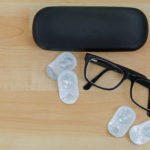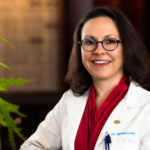By Pamela A. Lowe, OD, FAAO, Dipl. ABO

Sept. 14, 2022
We have been experiencing a great year in optometry. This year ushered us out of heavy pandemic restrictions and enabled us to pivot to more efficient ways of running our offices while safely caring for patients and growing profitability.
In our practice, contact lenses are one of the prime ways we both serve patients and become more profitable – nearly half of our patients are in contact lenses. This means working to prevent dropouts and doing all we can to ensure our patients are in the best lenses possible is essential to both patient care and our practice’s financial well-being.
Contact Lens Profitability Goes Well Beyond Per-Box Sales
Our practice is blessed to be celebrating 30 years of living out our vision to be the most trusted eyecare professionals in our community. A key factor in earning this distinction has been our commitment to offering patients the visual freedom they deserve by providing superior contact lens care.
Many optometrists feel that the profit margin on contact lens sales pales in comparison to the profit on a spectacle lens sale. If you simply calculate profit by looking at these purchases as isolated sales, this fact is certainly true. But let’s look at the bigger picture when assessing the value in successfully fitting a contact lens patient verses a spectacle lens-only patient.
Our full scope, primary care practice is located on the northwest side of Chicago and has an active patient database of 8,795 (patients seen within the past five years); as we like to put it, we see patients from “cradle to coffin.” Analysis of our patient demographics show 47 percent wear contact lenses, which accounts for 26 percent of our revenue derived from contact lens services (19 percent fitting fees, 81 percent product sales).
National market research shows the average spectacle only-lens wearer returns for comprehensive eyecare approximately every 2-3 years and the average contact lens wearer returns in 12-18 months. When teasing out return rates for comprehensive visits among contact lens wearers, it has been shown that compliant contact lens wearers return three months sooner than non-compliant wearers and compliance increases with frequency of lens replacement (two-week replacement 34 percent compliance rate vs. monthly at 67 percent and daily at 87 percent).i
Furthermore, when the Management & Business Academy reviewed independent ABB Analyze by Glimpse data from practices grossing >$1 million dollars or more, contact lens wearers generate 123 percent more annual revenue than spectacle-only patients, and daily disposable multifocal contact lens wearers were even more profitable, spending 285 percent more!ii In crunching our numbers, a contact lens wearer provides approximately $200/year more in profit over a three-year span than a glasses-only patient.
Lead with the Best CL Option for Each Patient
Realizing that contact lenses are such an enhancement to our patients’ lives while also enhancing our business bottom line, our practice has implemented a straightforward, three-step contact lens strategy for all doctors and team members to follow. To start, we believe everyone is a contact lens candidate until proven otherwise. Next, we prescribe daily disposable lenses as the preferred modality, and finally, we choose Alcon’s proprietary permanent water surface technology as our preferred design of lens. This means water surface technologies are permanently anchored to the lenses and feature water-loving polymers that attract water to provide a cushion of moisture and exceptional comfort for the wearer.
Every patient who comes in for a comprehensive eye examination is considered an opportunity to be fit or refit in contact lenses until we document otherwise. In the past, we operated on the presumption, “the patient will let us know if contacts are for them,” while the patient thought, “the doctor will certainly let me know if contacts are for me,” and too many opportunities were lost. When we get into the mindset and habit of offering visual freedom from spectacles to all our patients, it’s amazing how seamless the process becomes. Coupled with industry partners giving practices no-cost fitting sets, and the wide variety of lens parameters available, it has never been more efficient and cost-effective for patients to experience contact lenses.
Optometrists and opticians have no hesitation offering the top-of-the-line spectacle lenses and frames first when prescribing, yet many still hesitate to offer the healthiest, most convenient option when prescribing contact lenses. Ask ourselves, why? When most ODs wear and fit their families with single-use lenses, why would we refrain from allowing patients to experience the same comfort and convenience of a fresh contact lens every day? The knee-jerk response to that question has traditionally been cost, but whatever the barrier may be, think about the cost of NOT allowing your patient to judge the value of their visual freedom. We put the patient in the driver’s seat and let them determine the value of healthy, comfortable, convenient contact lens wear.
Other Articles to Explore
Drop Out is Not An Option!
We have improved our contact lens strategy to address this too-frequent occurrence. Approximately 20 percent of new wearers drop out of contact lens wear in the first year and the most disturbing part of that is that 57 percent don’t tell us!iii We have successfully reduced our dropout rate to less than 10 percent by offering patients single-use, daily disposable lenses for increased compliance while fitting water surface technology lenses, which clinically improve overall comfort and vision. Water Gradient Technology was introduced in the U.S. in 2013 with the launch of Alcon’s DAILIES TOTAL1 and has changed the game for many of our patients who have experienced the discomfort of contact lens-related dry eye. Water Gradient Technology incorporates two unique polymers, a silicone core and a permanent water gel surface, that uniquely supports tear film stability.
There are also other water surface designs available in this category, namely Alcon’s PRECISION1 daily disposable lenses that feature SMARTSURFACE Technology, which keeps moisture on the lens surface, designed to address the common reasons why one-in-five new wearers discontinue contact lens wear within the first year.
Most recently, Alcon launched TOTAL30, the first and only monthly replacement Water Gradient lens which is clinically shown to feel like nothing, even at day 30. This lens is unique because it was born from the Water Gradient technology of DAILIES TOTAL1. When we start the new wearer or convert an existing contact lens wearer in this novel technology where every part of the lens touching the cornea and lids is 80-100 percent water, comfort and vision significantly improve and dropout rate goes down. With DAILIES TOTAL1 lenses available in sphere, toric and multifocal, PRECISION1 available in sphere and toric and TOTAL30 lenses available in sphere with expanded parameters to come, it’s rare there is not a permanent water surface lens to fit the vast majority of our patients’ needs.
Editor’s Note: There are many high-quality contact lenses to choose from, including MyDay from CooperVision, Bausch + Lomb INFUSE and Acuvue Oasys 1-Day, among other options. In addition to daily disposables, each of those contact lens providers also offers monthly modalities, including Biofinity from CooperVision, Bausch + Lomb ULTRA and PureVision, and Vita from Acuvue.
Our practice truly believes, “What’s best for the patient is best for the practice.” Successful contact lens wear affords our patients the luxury of visual freedom from spectacles while filling our office with loyal, happy patients who afford the practice financial freedom.
References
i. Dumbleton K, Richter D, Bergenske P, Jones LW. Compliance with lens replacement and the interval between eye examinations. Optom Vis Sci. 2013;90:351-358.
ii. GLIMPSE de-identified aggregate data, Alcon data on file, 2018.
iii. Sulley A, Young G, Hunt C, et al. Retention rates in new contact lens wearers. Eye Contact Lens. 2018;44:S273-S282
 Pamela A. Lowe, OD, FAAO, Dipl. ABO, is a partner with Professional Eye Care Center in Chicago. To contact her: plowe@proeyecarecenter.com
Pamela A. Lowe, OD, FAAO, Dipl. ABO, is a partner with Professional Eye Care Center in Chicago. To contact her: plowe@proeyecarecenter.com

























